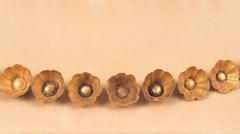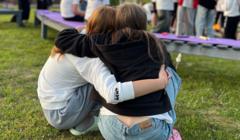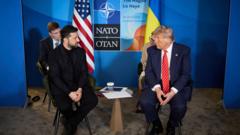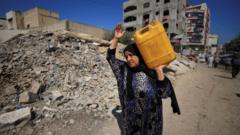**The article highlights the serious impact of war on Sudan's cultural institutions as the National Museum suffers significant losses amidst looting and destruction, raising concerns about the future of its invaluable heritage.**
**War's Toll on Sudan's Cultural Heritage: A Deep Loss**

**War's Toll on Sudan's Cultural Heritage: A Deep Loss**
**Exploring the devastation of Sudan’s museums amidst ongoing conflict and looting**
The Sudan National Museum, once a beacon of national pride, has become a stark reminder of the toll that war can take on a nation’s cultural heritage. Characterized by its stunning Nubian artifacts and rich history, the museum stood as a testament to the achievements of Sudan's civilizations and as a source of education for many. However, with the outbreak of conflict two years ago, the museum, located in the heart of Khartoum, has seen its treasures plundered and destroyed amidst the chaos.
Under the administration of Ikhlas Abdel Latif Ahmed, director of museums at Sudan's National Corporation for Antiquities and Museums, the museum had been a vibrant hub for tourists and students alike. Yet, the last two years have seen the devastating impact of the ongoing struggle for power between the Sudanese military and the Rapid Support Forces (RSF), which has resulted in lengthy periods of control over central Khartoum and the cultural centers within.
Officials estimate that tens of thousands of items have either been obliterated or illegally transported with the intention to sell, leaving behind a scene marked by shattered glass, spent bullet casings, and debris from looters. Ahmed lamented, "They destroyed our identity, and our history,” underscoring the cultural loss that accompanies the physical destruction of artefacts.
Previously undergoing rehabilitation, many of the museum's prized objects were secured in boxes, which may have inadvertently facilitated their removal. While Sudanese officials suspect the RSF collected treasures to smuggle abroad—potentially to the UAE—there’s been no conclusive evidence to confirm these suspicions. This ongoing apprehension was echoed by international bodies like UNESCO, which cautioned against the illicit art trade utilizing smuggled Sudanese relics.
Amid the ruins, some artefacts still remain, albeit damaged, highlighting the tragic fate of items like a gold collar belonging to King Talakhamani of Nuri, which now sits in uncertainty. Ahmed's heart-wrenching assertion that the worth of these pieces is immeasurable encapsulates the magnitude of loss experienced by a nation that has endured for so long.
In light of the grim reality, Sudan's interim government aims to reach out to agencies such as Interpol and UNESCO with hopes of recovering looted artifacts—a task fraught with difficulty given the circumstances on the ground. Critics point to the RSF’s actions as a deliberate attempt to undermine Sudan’s historical narrative and erode its cultural identity, as articulated by thinkers like Amgad Farid.
This devastation has rendered not only the National Museum but various cultural institutions vulnerable, mirroring the individual experiences of countless Sudanese individuals displaced by violence. The UN reports that nearly 13 million people have been uprooted since the conflict erupted in early 2023, with civilian casualties estimated at 150,000.
While the battle for recovery and restoration is daunting, Ahmed remains hopeful. "Inshallah, we will get all our collections back," she conveyed, reassuringly envisioning a future where they can rebuild their heritage even more beautifully than before. As the war continues, the stories of loss and resilience intermingle, creating a pressing narrative of cultural survival amid destruction.



















